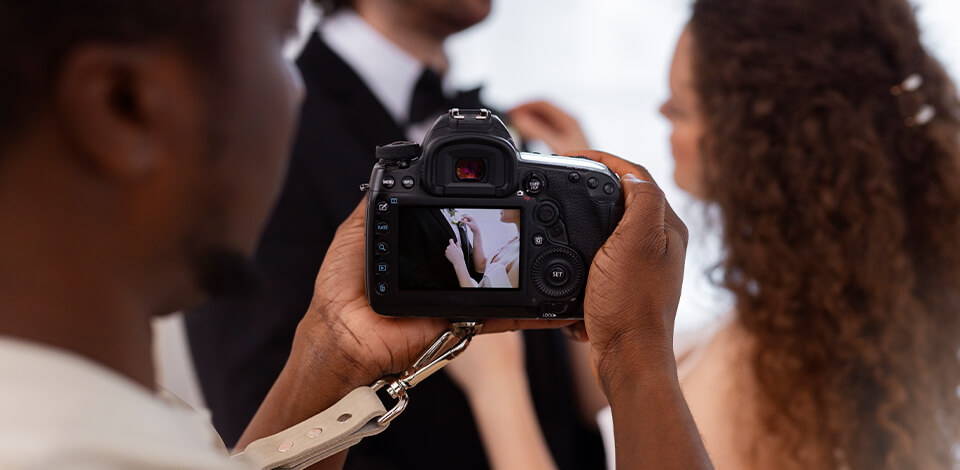
The best camera for wedding photography is not always the most expensive one, but it should have a wide range of features. High-quality video recording in HD or even 4K, the ability to capture still images in RAW or JPEG format, support for multiple memory card formats, and a weather-sealed body to protect against unexpected weather conditions are all important factors to consider.
An average price of a decent camera body is approximately $1500. As you see, buying this type of equipment is a huge investment, so choose a model that is easy to use and transport. Other features you need to look for are speedy AF, great performance in poor lighting conditions, and a silent shooting mode.
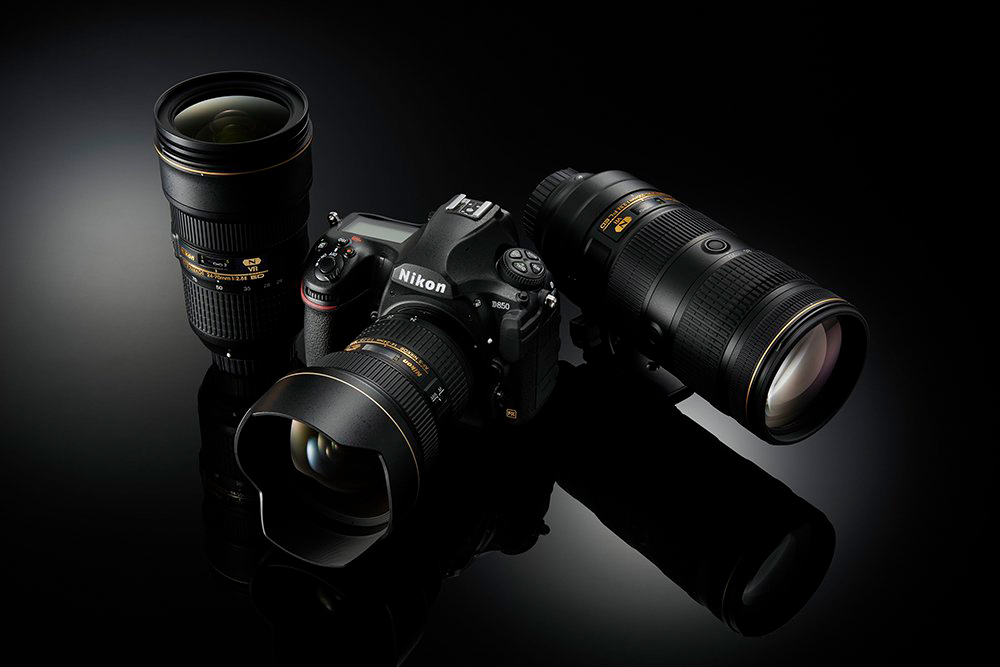
Resolution: 45.7MP | Sensor Type: FX-Format BSI CMOS Sensor | Screen: 3.2" 2.36m-Dot Tilting Touchscreen LCD | Lens Mount: Nikon F | Max Burst Speed: 9fps
Nikon D850 is one of the best cameras for wedding photography which offers an expandable ISO setting from 64 up to 25600, which makes this model a perfect option for shooting in different lighting scenarios. Those wedding photographers who often work in spaces with poor illumination like churches manage to take top-rated pictures and record HD videos using this device.
Silent shooting mode is another attractive feature that gives Nikon D850 an edge over other competitive cameras for wedding photography available on the market today. What is more, Nikon D850 comes with a Snapbridge App that lets you export images to the supported smartphones or tablets via Bluetooth Low Energy.
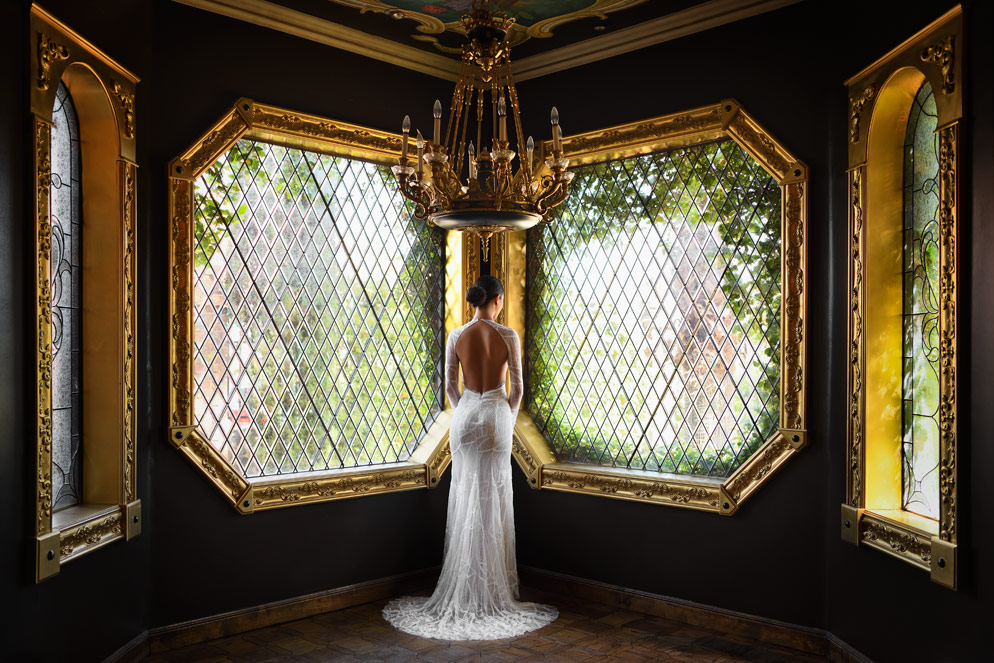
Taken with Nikon D850
A touchscreen LCD with a tilting mechanism is a selling point of this highest megapixel camera as well. With such a screen, focusing and shooting is a one-tap task. Besides, it allows you to zoom in taking pics in a live view mode, which is a real bonus for photographers who like to create compositions with interesting points of view.
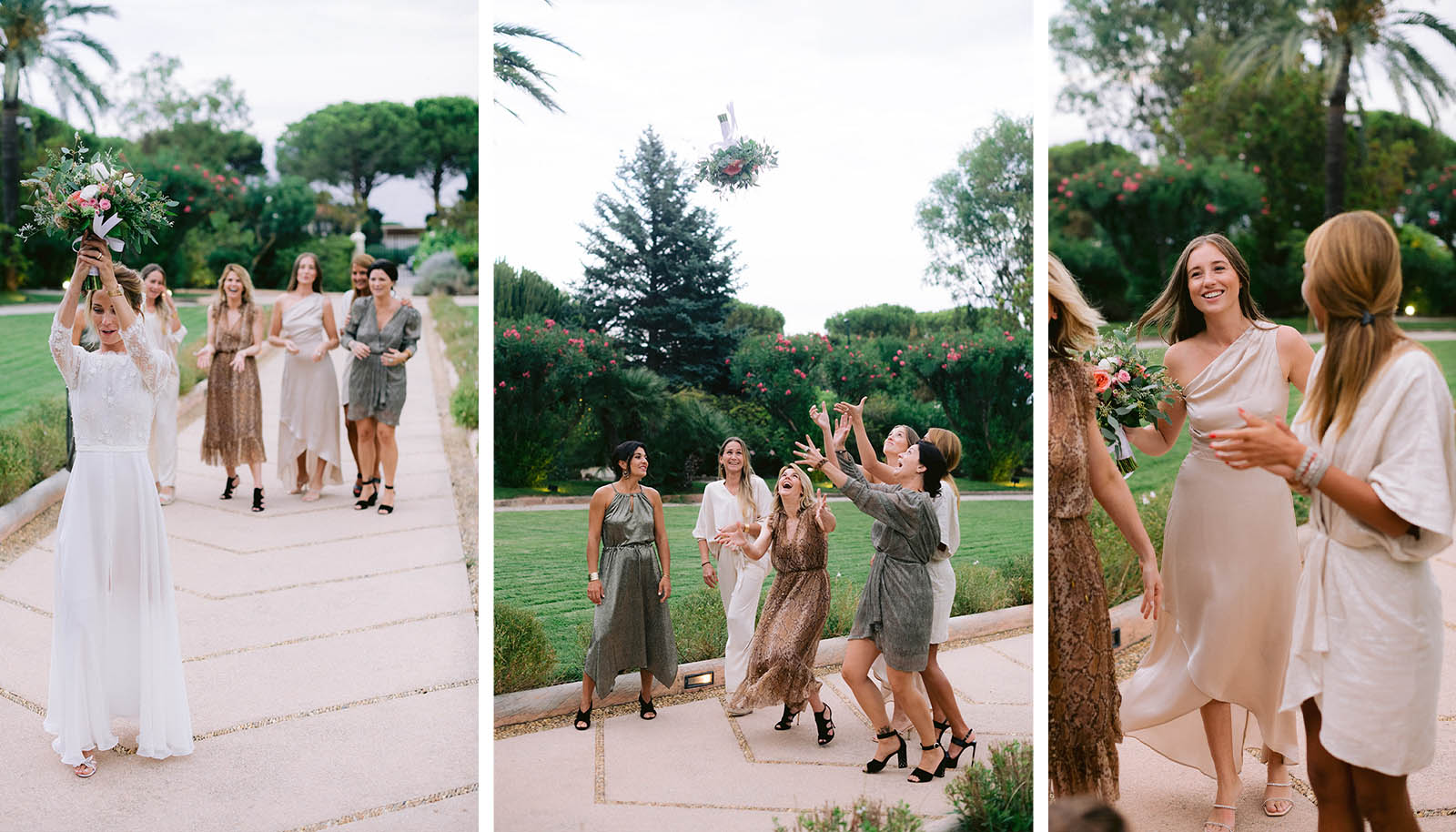
I really like this remarkable piece of technology as it boasts a 45.7MP sensor and a staggering 9 frames per second shooting speed. These features make it an unparalleled choice for capturing the fast-paced, fleeting moments that define weddings. One standout feature is its built-in vertical grip, a godsend when working in confined venues where space is a luxury.
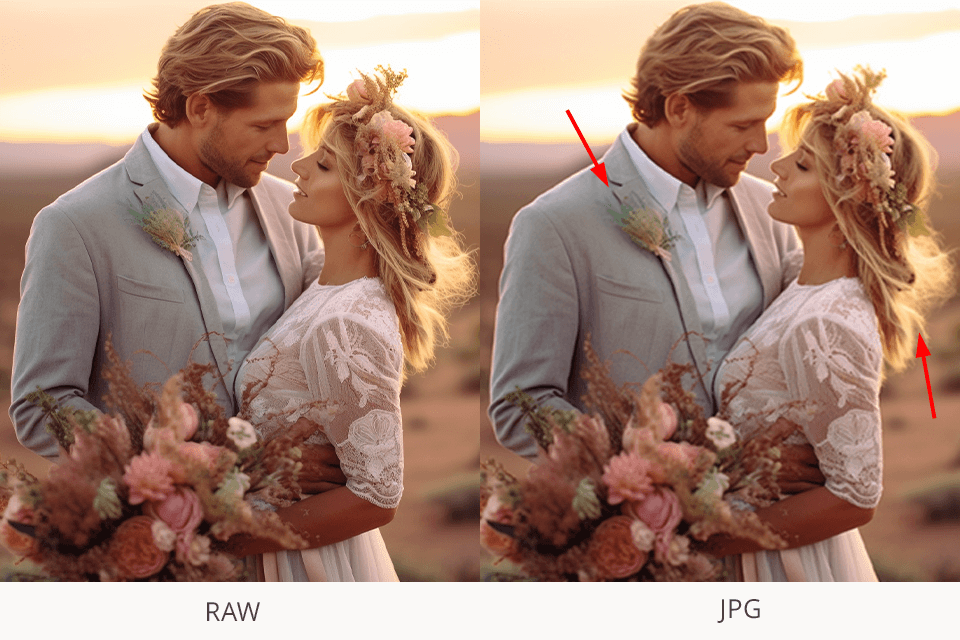
This preservation of initial parameters ensures that every nuance, every emotion, is captured with the best wedding camera and can be meticulously enhanced in post-production.
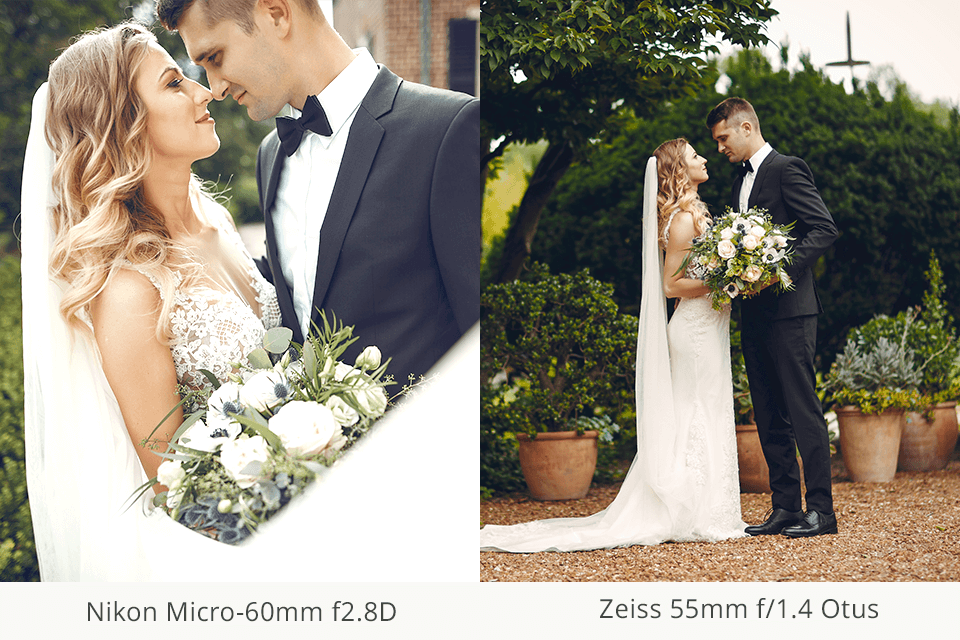
Moreover, the D850 proves its versatility through its compatibility with a wide range of Nikon lenses. One such lens, the Nikon Micro-60mm f2.8D model, has become my go-to choice.
While its autofocus may not be the fastest and a tad noisy, these nuances fade into insignificance amidst the grandeur of wedding moments. I've found a clever workaround by pairing this lens with Kenko extension tubes, effortlessly correcting the autofocus issue.
| FEATURES | NIKON D850 | NIKON D810 |
|---|---|---|
|
Autofocus |
153 dots |
51 dots |
|
Megapixels |
45.7MP |
36.3MP |
|
Battery Life |
1840 shots |
1200 shots |
|
Weight |
2lbs |
2.16lbs |
|
Tilting Screen |
✔️ |
❌ |
|
Wi-Fi |
✔️ |
❌ |
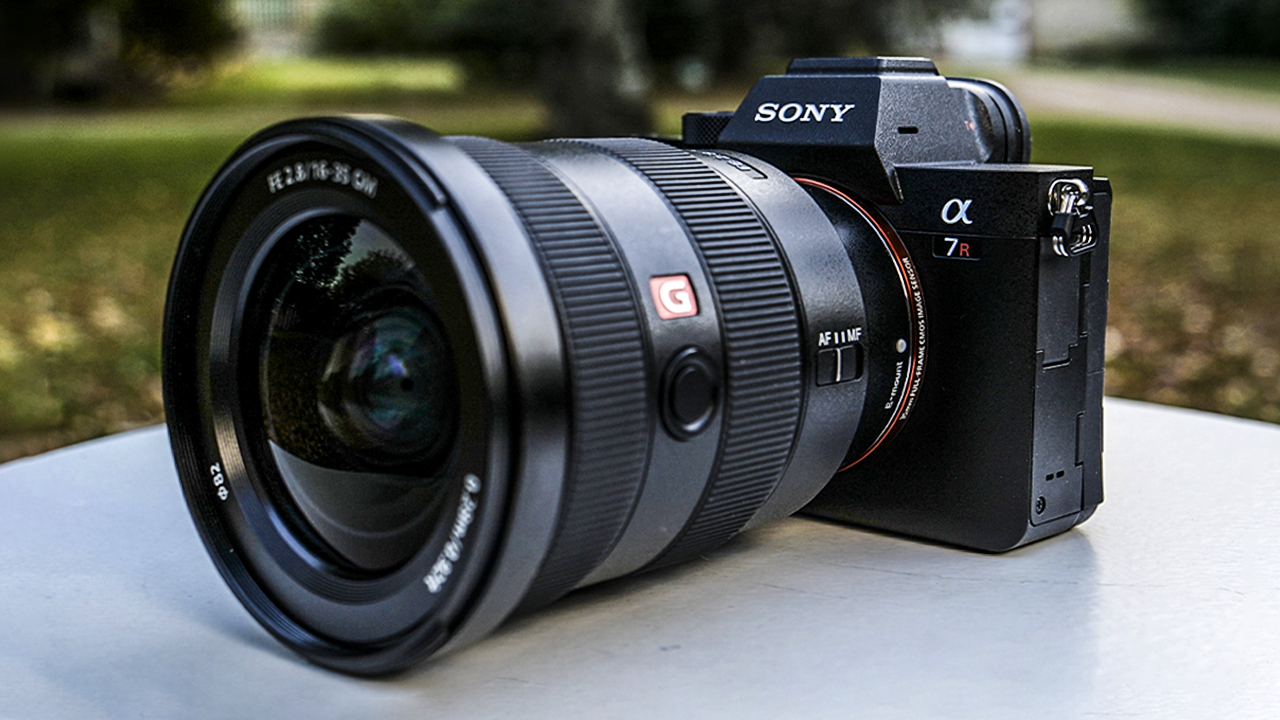
Resolution: 61MP | Sensor Type: Full-Frame Exmor R BSI CMOS Sensor | Screen: 3.0" 2.36m-Dot Tilting Touchscreen LCD | Lens Mount: Sony E | Max Burst Speed: 10fps
One of the standout features of Sony a7R IV wedding camera is its versatility. It offers a wide range of shooting modes and has excellent image quality. The 61MP resolution may seem like overkill in most situations, but you can easily use the crop mode to reduce the file size.
The autofocus system on the a7R IV is impressive. It's fast and accurate, which is crucial when capturing those candid moments during a wedding. Even if your focus point isn't directly on the subject, this camera for wedding photography can still track moving subjects effectively, so that it is an appropriate camera for portraits.

Taken with Sony a7R IV
Dual card slots are a game-changer for wedding shooters. It ensures the safety of your image data, which is incredibly important. Plus, the camera's low-light sensitivity is impressive, and the high-resolution sensor provides incredibly detailed and sharp images, which makes it good for taking wedding reception photographs.

Resolution: 45MP | Sensor Type: Full-Frame CMOS Sensor | Screen: 3.2" Vari-Angle Touchscreen LCD | Lens Mount: RF | Max Burst Speed: 12fps
Although Canon EOS R5 is an expensive wedding photography camera, its set of features and capabilities make it a must-have wedding photography gear. This model comes with a high-res 45MP image sensor that ensures an excellent quality of photos even when shooting in dim spaces.
Besides, it provides you with plenty of room for cropping your picture during post-production. A dual memory card slot, which supports the ultra-rugged CF Express format, doubles your shooting capacity. Do not hesitate to take orders for shooting beach wedding ceremonies or on a rainy day, as the camera body is designed to withstand moisture.

Taken with Canon EOS R5
Canon EOS R5 is fitted with smart face detection technology, which functions flawlessly even in poorly lit environments. This best camera for weddings can go up to 20 fps at electronic and 12 fps at the mechanical shutter, which is fast enough to capture every memorable moment.

Resolution: 26.1MP | Sensor Type: APS-C X-Trans BSI CMOS 4 Sensor | Screen: 3.0" 1.62m-Dot Vari-Angle Touchscreen | Lens Mount: Fujifilm X-mount | Max Burst Speed: 10fps
Fujifilm X-T4 appeals to wedding photographers with its rich selection of top-rated specs like a 26.1MP sensor, 6.5 stops picture stabilization system, weather-sealed construction, etc. Although this wedding photography camera features a smaller sensor compared to other full-frame cameras, its body is also more compact and easier to carry.
X-T4 is fitted with dual card slots, which is an obvious benefit. When it comes to usability, it is important to notice that the camera lens can control the aperture. This model features a top-rated 425-point autofocus system which allows wedding photographers to shoot high-end videos, including UHD and DCI 4K recordings.

Taken with Canon EOS R5
With a set of film simulation modes like Provia, Velvia, Classic, Astia, Eterna, etc., Fujifilm X-T4 lets you replicate the effect of shooting on film to achieve original compositions, that is why it is considered to be one of the best wedding photography camera.

Resolution: 24.5MP | Sensor Type: FX-Format BSI CMOS Sensor | Screen: 3.2" 2.1m-Dot Tilting Touchscreen LCD | Lens Mount: Z-mount | Max Burst Speed: 14fps
Nikon Z6 II is among the best cameras for wedding photography which offers just about any feature a beginner might dream up to take stunning photos. Although this camera is stuffed with impressive specs, it has a relatively low price. It is fitted with a 24,5MP sensor that allows taking high-res images, which you can easily scale to make big prints. With this spec, it is possible to take shots of awesome quality in low-light.
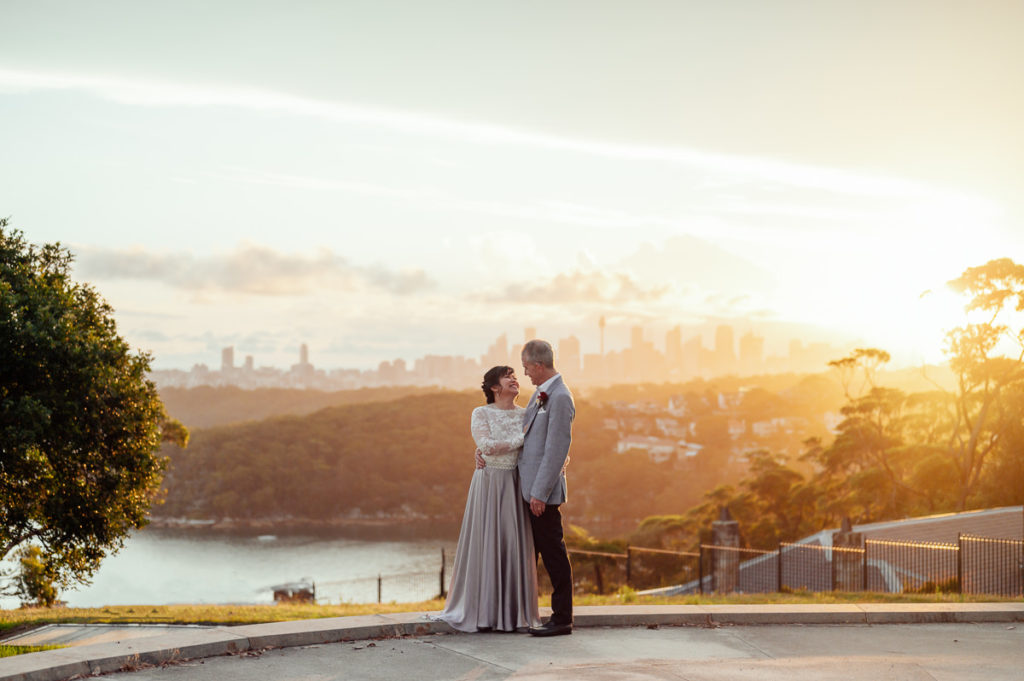
Taken with Nikon Z 6II
The fast viewfinder and an extensive selection of on-camera controls are among the most appealing features. Besides, Nikon Z6 II supports dual memory card slots that offer impressive image storage capabilities. Another argument in favor of this camera for photography is a rugged body with a textured grip and magnesium alloy used on the body panels for convenient holding during long photoshoots.

Resolution: 51.4MP | Sensor Type: 43.8 x 32.9mm CMOS Sensor | Screen: 3.2" 2.36m-Dot Tilting Touchscreen LCD | Lens Mount: G-Mount | Max Burst Speed: 3fps
The Fujifilm GFX50S II is a flexible and easy-to-use large-format mirrorless camera. A 51.4MP CMOS sensor is the biggest selling point of this model.
It enables photographers to take clear images with a high level of detail, provides them with a huge dynamic range and a shallow depth of field. This dynamic range camera is equipped with top-notch Fujifilm’s AF system that reduces shakiness improving the overall quality of your pics.
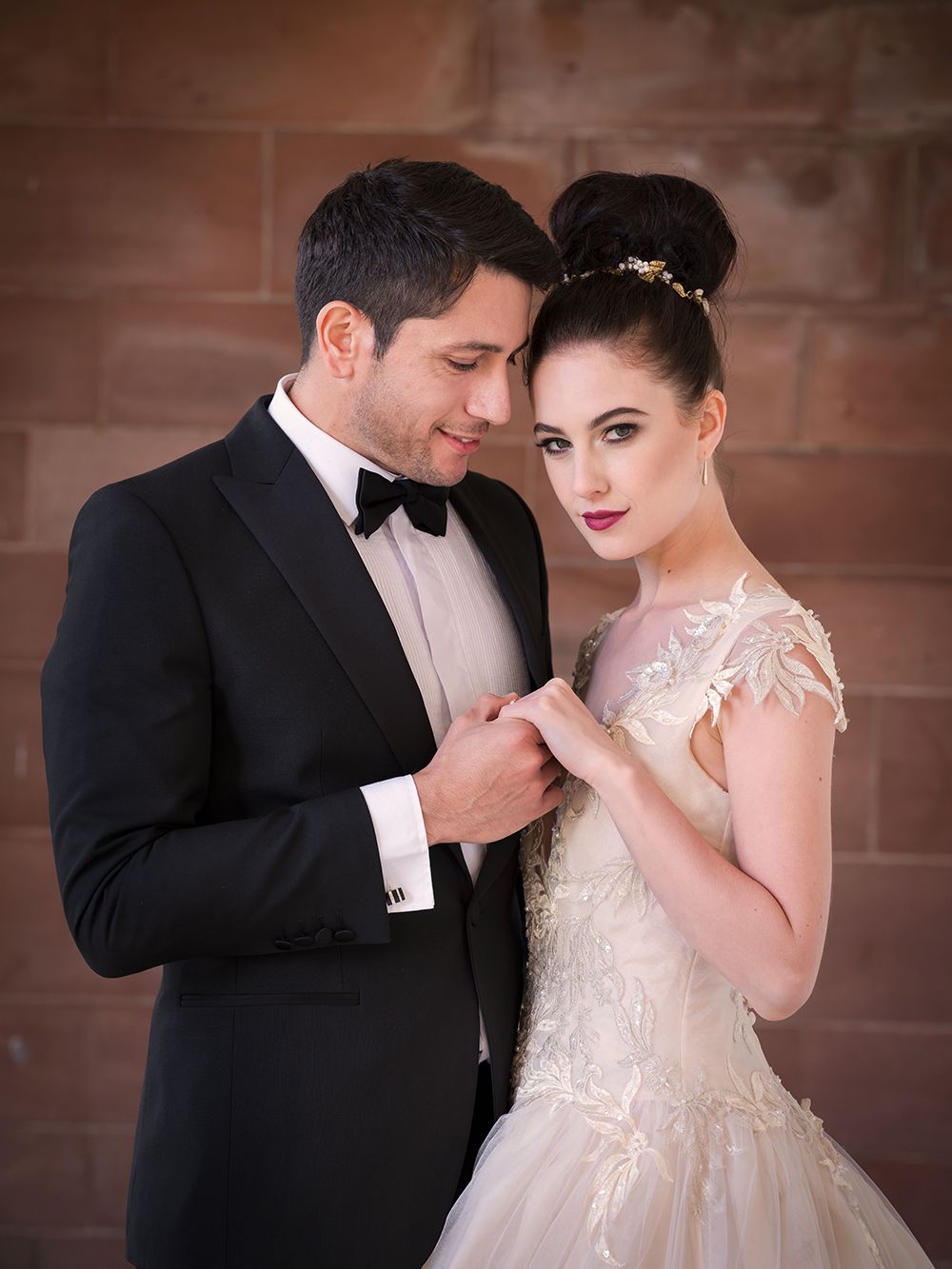
Taken with Fujifilm GFX50S II
A stack of 19 film simulation modes is a real bonus. Using them, it is possible to achieve the original mix of colors inspired by Fujifilm’s classic filmstock. For example, the Classic Chrome filter can add a retro vibe to your wedding shots. As for usability, this wedding photography camera has an ergonomic grip and easy-to-access controls that you can adjust even with one hand.
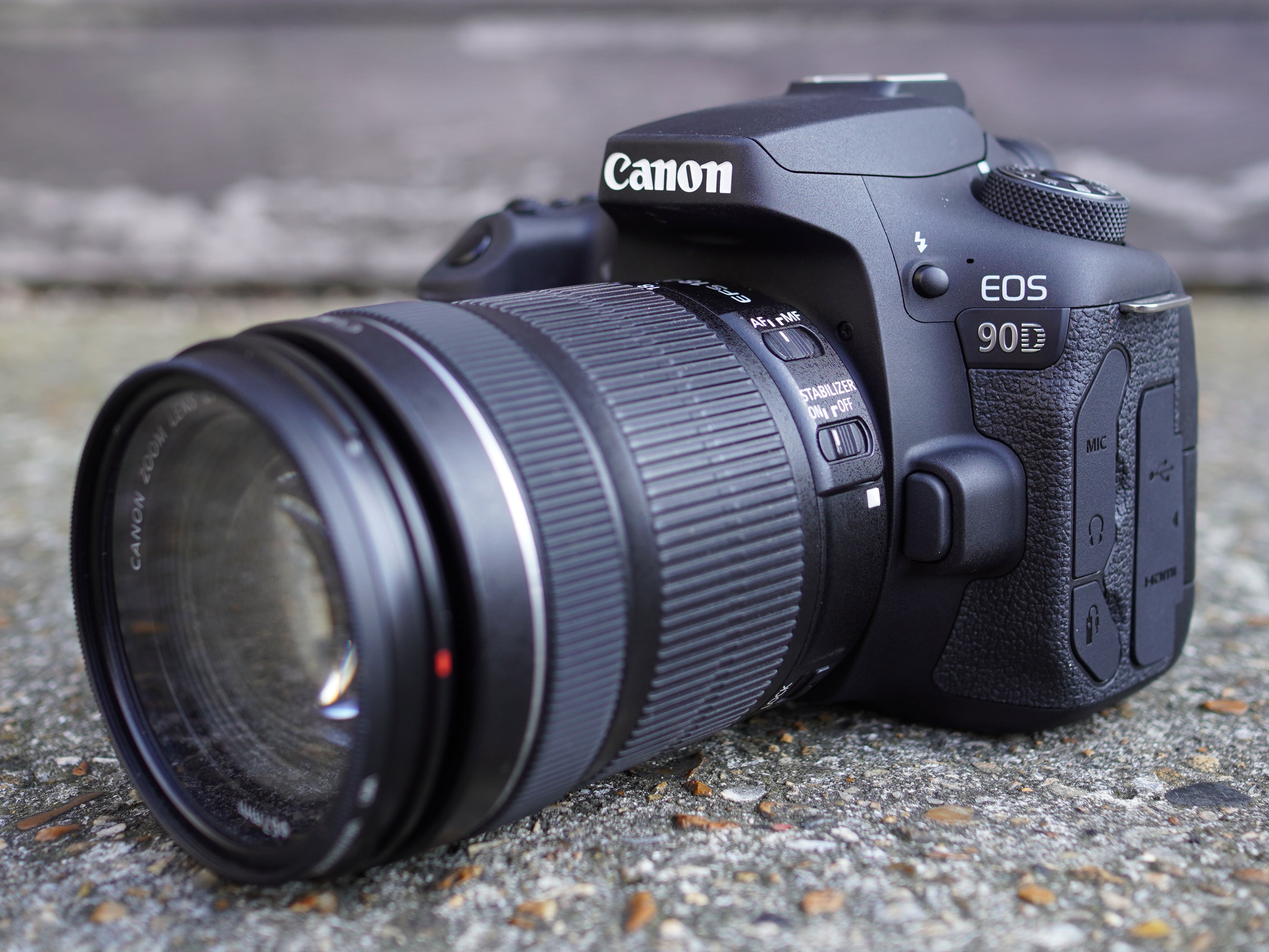
Many shooters name Canon EOS 90D the best wedding camera because of its set of features that allow taking excellent shots in various shooting scenarios. The 1300 battery life capability is one of the greatest advantages. Other key features include 10fps burst shooting for capturing every single moment of the wedding ceremony and a 32.5MP APS-C sensor that produces awesome photographs.
Conveniently arranged controls paired with an AF joystick allow adjusting the camera’s specs fast and easily. Besides, this Canon camera has an ergonomic grip, the advantage of which you will definitely appreciate when shooting long hours.

Taken with Canon EOS 90D
Built-in Wi-Fi mode enables fast and trouble-free photo transfer to your smartphone and lets you instantly share photos with the newlyweds. Besides, you can benefit from this technology to publish the best shots on social media pages to attract potential clients.

Resolution: 34.3MP | Sensor Type: Full-frame mirrorless | Screen: Tilting LCD screen | Lens Mount: Nikon Z-Mount | Max Burst Speed: 4.5fps
Nikon Z5 is in the list of the best cameras for wedding photography as it boasts a powerful 24.3-megapixel sensor, which produces stunningly detailed images. It also has a wide ISO range, allowing you to capture beautiful shots even in low-light conditions.
The autofocus system of this Nikon photography camera is impressive with its 273 focus points, making it great for tracking moving subjects during a wedding shoot. Additionally, it has a user-friendly video mode, perfect for capturing those important moments in motion.

It is a full-frame mirrorless cam, which means it offers the advantages of a full-frame sensor in a more compact and lightweight body. This makes it a great option for long shooting sessions, as it weighs just 429 grams.
The wedding camera also features a tilting LCD screen and an HDMI port for easy reviewing and editing of your work. Another notable feature is the dual card slot, which is a huge advantage for wedding specialists needing to back up their files on two different devices.
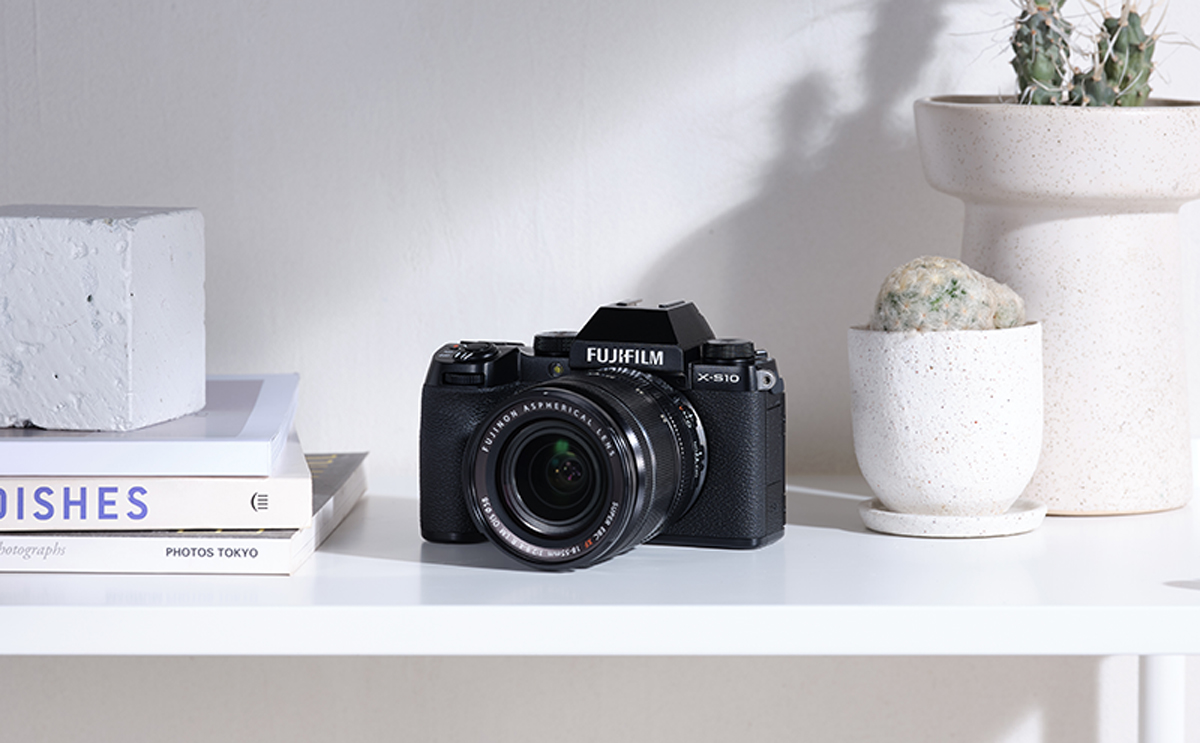
Resolution: 26.1MP | Sensor Type: APS-C Sensor | Screen: 3.0" 1.04m-dot touchscreen LCD | Lens Mount: FUJIFILM X mount | Max Burst Speed: 30fps
One of the standout features of Fujifilm X-S10 camera for wedding photography is its excellent image quality. Whether you shoot in RAW or JPEG, this Fujifilm camera delivers outstanding results. The autofocus system is top-notch, allowing you to capture even the most challenging shots with ease and accuracy. Additionally, the camera offers various film simulation modes, giving you the flexibility to achieve a specific look and feel for your images.
Another advantage is the wedding camera's size and weight. It's smaller and lighter compared to other cameras in its class, making it perfect for wedding photographers who need to be mobile and carry their gear for extended periods. You'll appreciate this when you're running around capturing those special moments throughout the day.

Taken with Fujifilm X-S10
The X-S10 also excels in low-light situations, which is crucial for wedding photography. Its impressive 5-axis in-body image stabilization compensates for movement, allowing you to shoot handheld in poor lighting conditions. This feature is a game-changer, ensuring your shots remain sharp and clear even when the lighting is less than ideal.
Resolution: 24.2MP | Sensor Type: CMOS (APS-C) | Screen: 3" TFT color LCD | Lens Mount: EF-R mount | Max Burst Speed: 15fps
Canon EOS R10 impresses with its high shooting speed, allowing photographers to capture those decisive moments with ease. The fast autofocus system ensures that the subjects are sharp and in focus, which is crucial for wedding photography. Additionally, the camera's high resolution sensor delivers excellent image quality, allowing me to capture every detail of the wedding day.
One of the standout features of this best camera for weddings is its versatility and ease of use. Despite being an entry-level model, it offers advanced capabilities and handles similarly to its higher-end siblings in the Canon EOS R mirrorless body series. The sleek and lightweight body design makes it comfortable to hold and carry throughout the day.
Taken with Canon EOS R10
This flash can be triggered either by pressing the M-Fn button or by using a remote trigger accessory. The Pre-flash feature is also useful for reducing the impact of a bright flash on the subject's eyes, especially when using special effects lenses for wedding photography.
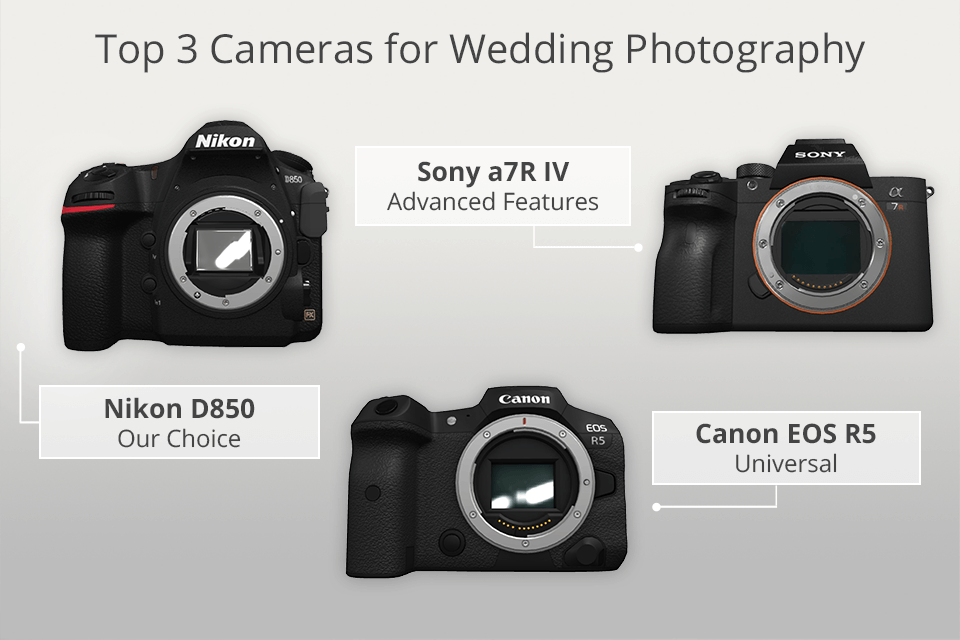
No matter whether you are an up-and-coming photographer or a seasoned professional, choosing the right gear is crucial for any shooter.
Sensor - full frame. This is probably the most important aspect you need to take into account when selecting a camera for product photography, wedding, or other types of shots.
The image quality largely depends on the size of a sensor, therefore full-frame sensors are always preferable. Beyond the size, you also need to check the megapixel count as these specs go hand-in-hand.
Low light capabilities - ISO 800 or 1600. The best camera for wedding photography should offer excellent performance in dim lighting conditions. When shooting wedding ceremonies, you will probably need to take many images in the evening and there will be many situations where external lighting is not possible, so to get amazing results, your camera should have a high ISO capacity.
Autofocus - Single AF point. A wedding is a dynamic event so you will need to capture moving subjects, therefore fast and accurate autofocus is crucial for shooting such celebrations. I recommend choosing a wedding camera with more autofocus points.
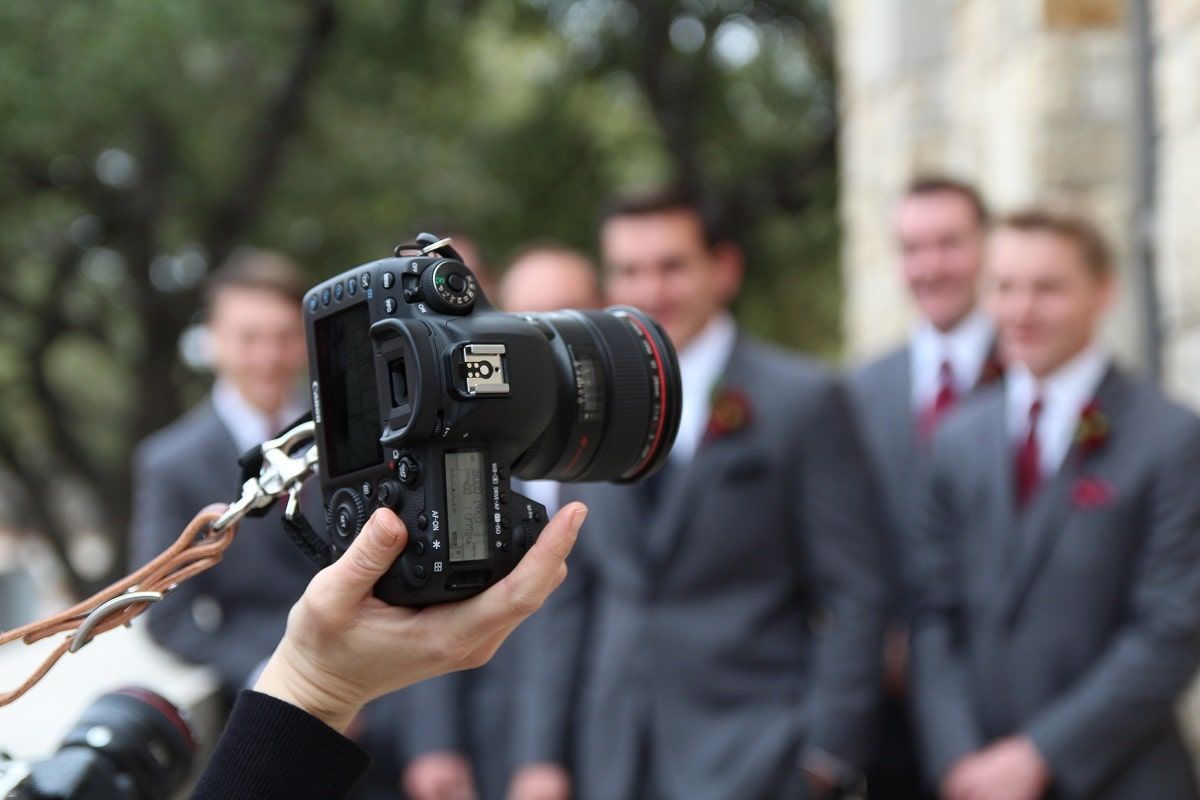
Rugged body and weatherproofing. Seasoned photographers know well that easy-to-grip cameras help survive a long wedding photo day. Besides, you need to purchase cameras for wedding photography that features a rugged body to make sure it won’t slip from your hands and break up. Even if you have a backup, such incidents are really embarrassing and might result in many missing shots.
Burst mode shooting - 30-60fps. Weddings are full of action: first dance, a bride throwing a bouquet, cake-cutting ceremony, etc. Therefore, it is important to check whether the selected camera supports continuous shooting mode and its specifications. My advice is to pick a model that lets you take minimum seven photos per second
Battery performance. Battery capacity is another key feature you need to check when selecting a great camera for wedding images. The discharged battery in the mid of a wedding is a real nightmare for every shooter. Of course, professional shooters always have some third party camera batteries with them, but making sure that each of these units is long-lasting is also essential.
Video capability – 4K. While not a necessity for every wedding photographer, being able to capture high-quality videos can be a valuable addition to your skill set. Look for a video camera that can record in 4K resolution, so you can document those precious moments in motion.
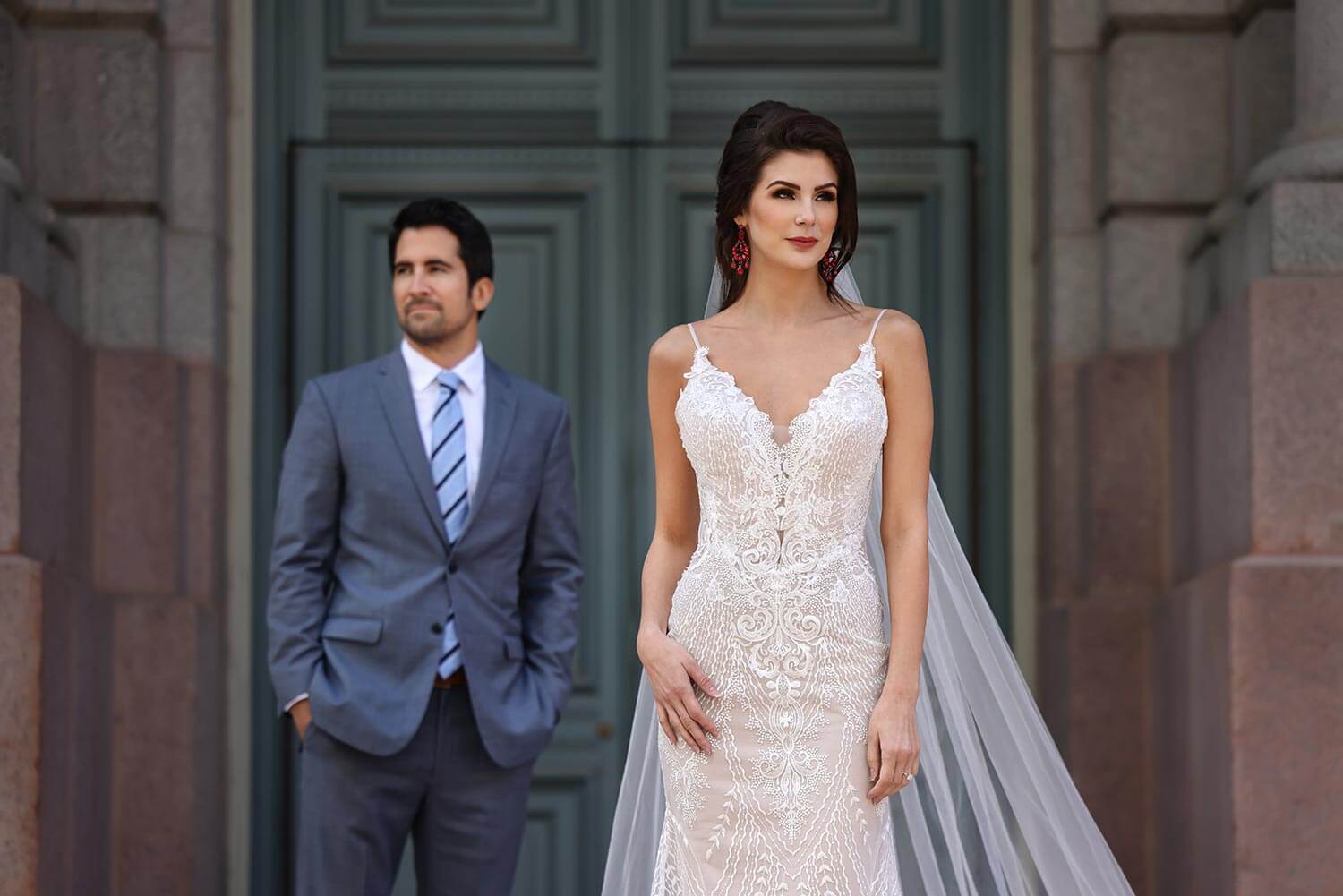
Memory cards – dual card slots. Weddings are once-in-a-lifetime events, and you definitely don't want to risk losing or corrupting your images. That's why having a camera with dual memory card slots is crucial. It allows you to have a backup, giving you peace of mind knowing that your precious memories are safely stored.